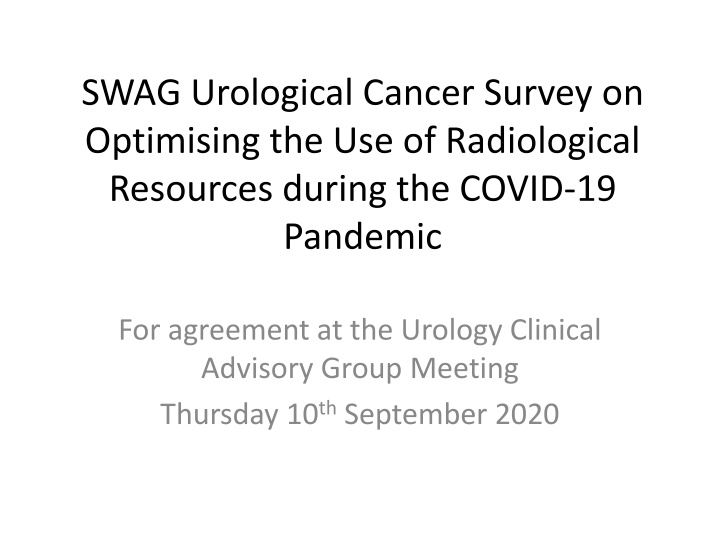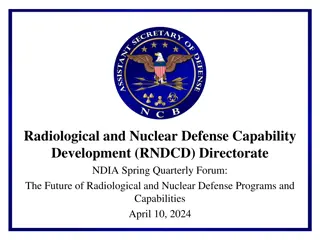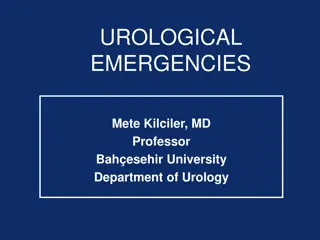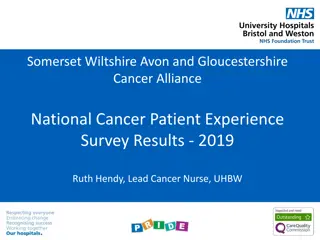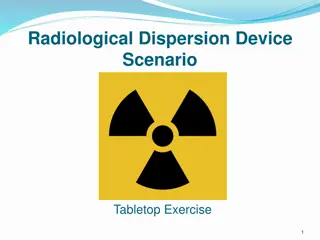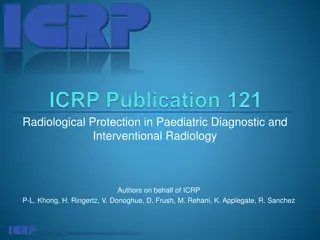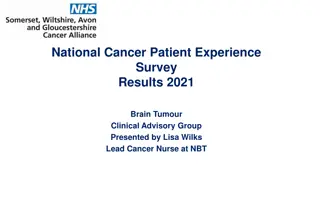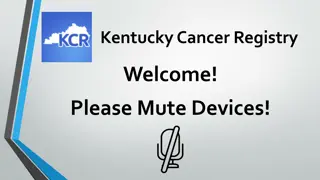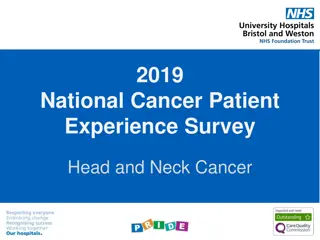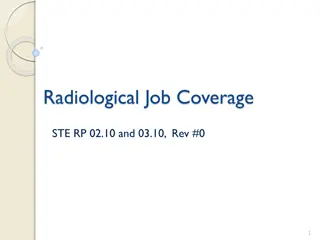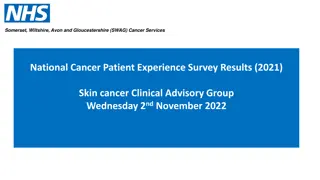Urological Cancer Survey on Optimising Radiological Resources during COVID-19 Pandemic
This survey aims to optimize radiological resources for urological cancer patients during the COVID-19 pandemic. It will be presented for agreement at the Urology Clinical Advisory Group Meeting on September 10th, 2020.
Download Presentation

Please find below an Image/Link to download the presentation.
The content on the website is provided AS IS for your information and personal use only. It may not be sold, licensed, or shared on other websites without obtaining consent from the author.If you encounter any issues during the download, it is possible that the publisher has removed the file from their server.
You are allowed to download the files provided on this website for personal or commercial use, subject to the condition that they are used lawfully. All files are the property of their respective owners.
The content on the website is provided AS IS for your information and personal use only. It may not be sold, licensed, or shared on other websites without obtaining consent from the author.
E N D
Presentation Transcript
SWAG Urological Cancer Survey on Optimising the Use of Radiological Resources during the COVID-19 Pandemic For agreement at the Urology Clinical Advisory Group Meeting Thursday 10thSeptember 2020
Question 2: Job Title Consultant Radiologist Consultant Urologist Consultant Urological Surgeon Consultant Oncologist Consultant Clinical Oncologist Consultant Urological Surgeon
Question 3: Prostate Cancer Please provide: Key priorities dependent on radiology. Areas in the pathway where scanning can be reduced, e.g. PSMA PET as an alternative to a bone scan and CT for Staging. For active surveillance: perhaps omit MRI follow up for patients with low risk prostate cancer and a stable PSA, as reviewed on a case by case basis.
Question 4: Renal Cancer Please provide: Key priorities dependent on radiology. Areas in the pathway where scanning can be reduced, e.g. surveillance strategies of untreated small renal masses and post treatment surveillance.
Question 5: Bladder Cancer Please provide: Key priorities dependent on radiology Areas in the pathway where scanning can be reduced, e.g. those cases with lower risk visible haematuria and a normal ultrasound scan may not need a CTIVU as part of their initial pathway assessment.
Question 6: Are you using a risk stratification tool to modify standards of care, e.g. Rockwood Frailty Score?
